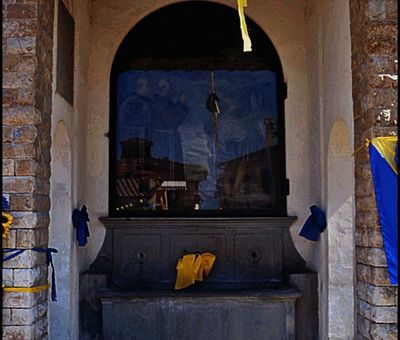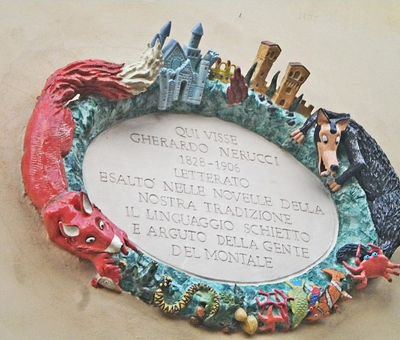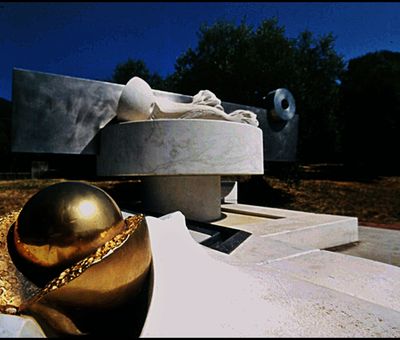All for the love of art
Tucked in a corner of Tuscany far from the dynamics of the touristy, industrial cities, Montale is a perfect place to go and unwind in. The relaxed climate has also inspired a number of artists. In the little piazza upstream of the church of San Martino, for example, there is a fountain with an ornate tabernacle, painted with murals. Not only is it an original work, it was Ardengo Soffici who painted it. The writer and painted accepted the invitation from the then-podestà (governor) in 1934, and here he made his one and only venture into mural painting. It represents a scene from the life of Saint Francis, depicted in the miraculous act of making water gush from a rock. On a plaque we read the phrase “per solo amore al popolo e all’arte” – all for the love of the people and art – a phrase that the artist wanted inscribed there.
Where stories are born
“Once upon a time there was a young woman, a peasant-girl who had a little land and managed to scrape a living from it.” Thus begins Prezzemolina, one of Gherardo Nerucci’s most famous novels. A story that mixes fear with a happy ending, an abandoned girl, an ogre, a Prince Charming and love triumphant. Nerucci spent the last years of his life here in the beautiful villa of Malcalo. Novelist, critic, polemicist, he is remembered first and foremost for the classic Sixty Popular Montalesi Tales, compiled from “the mouth of the people” and published in 1880 by the Florentine publisher Le Monnier. Almost a hundred years later, Italo Calvino drew inspiration from the Montalese intellectual’s style and methods when he came to assemble his famous Italian Folktales.
A mini Pantheon
Over the eighteenth and nineteenth centuries the name of Montale was helped by a number of illustrious citizens. Not all of these outstanding characters were crowned with the fame that they deserved, but they all contributed to the artistic, historical and literary debates of the last two hundred years.
These include Atto Vannucci, a politician, polyglot, traveller and driving force behind the movement towards Italian unification. A plaque stands witness to his birthplace in the village of Tobbiana. Also born in Tobbiana, but in 1781, was the abbot Lorenzo Nesi, a teacher and a man of letters. One cannot omit Pietro Fanfani (1815-1879), author of the Dictionary of the Tuscan Language, still studied today by those who want to understand the evolution of Italian. Finally, the sculptor Jorio Vivarelli (1922-2008) covered the world with traces of his art: messages of peace embodied in the living material of bronze and marble. His works are collected in the permanent collection of the villa Smilea and the statue park of Fognano, built around a large outdoor sculpture installation.







